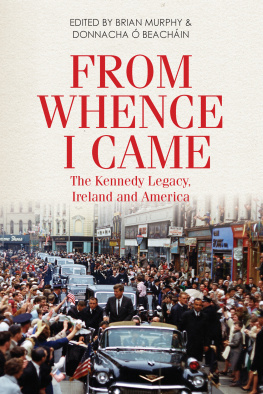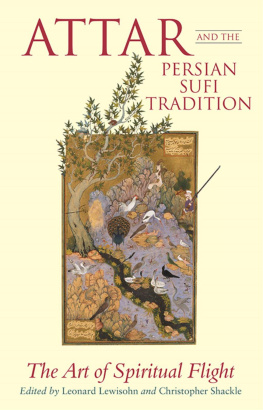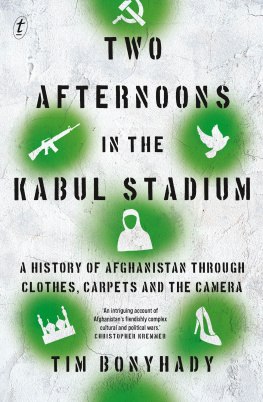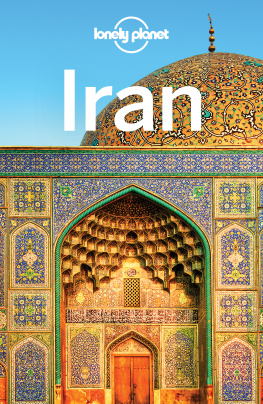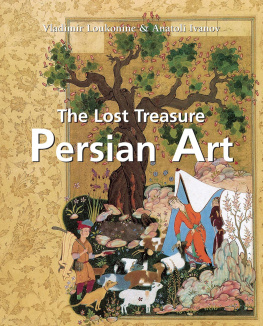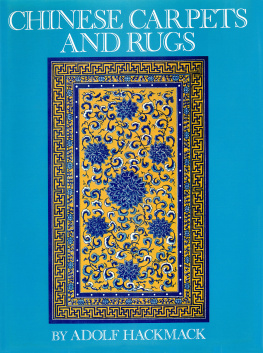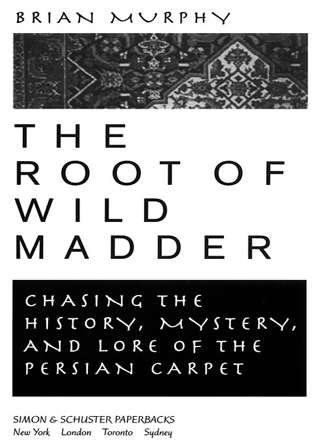
Also by Brian Murphy
THE NEW MEN: INSIDE THE VATICANS ELITE SCHOOL FOR AMERICAN PRIESTS

SIMON & SCHUSTER PAPERBACKS
Rockefeller Center
1230 Avenue of the Americas
New York, NY 10020
www.SimonandSchuster.com
Copyright 2005 by Brian Murphy
All rights reserved, including the right of reproduction in whole or in part in any form.
SIMON & SCHUSTER PAPERBACKS and colophon are registered trademarks of Simon & Schuster, Inc.
For information regarding special discounts for bulk purchases, please contact Simon & Schuster Special Sales at 1-800-456-6798 or business@simonandschuster.com
Designed by Karolina Harris
Manufactured in the United States of America
10 9 8 7 6 5 4 3 2 1
Library of Congress Cataloging-in-Publication Data
Murphy, Brian, date.
The root of wild madder: chasing the history, mystery, and lore of the Persian carpet / Brian Murphy
p. cm.
Includes bibliographical references.
1. Rugs, PersianHistory. I. Title.
NK2809.P4M87 2005
746.755dc22 2005044148
ISBN-13: 978-0-7432-6419-8
ISBN-10: 0-7432-6419-3
ISBN-13: 978-0-7432-6421-1 (Pbk)
ISBN-10: 0-7432-6421-5 (Pbk)
eISBN-13: 978-0-7432-7457-9
All photos courtesy of Hasan Sarbakhshian except 20: F.J. Hakimian and 22: Brian Murphy.
For Toula and Zoe, who weave color and wonder into my life
CONTENTS

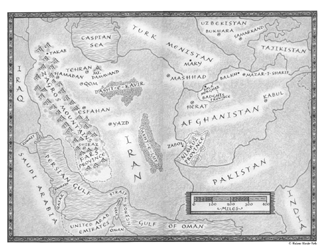

THE ROOT OF WILD MADDER
AUTHORS NOTE

This is a work of nonfiction. All the events occurred, and the dialogue is verbatim or reconstructed from notes.
But some points need to be mentioned.
The names of a few characters have been changed at their request to avoid possible political or commercial complications. Also, the sequence of some events has been reordered for the sake of clarity and narrative flow. For similar reasons, I often have hidden the presence of my translators and others who assisted me. They were, of course, invaluable. Many of the interviews and conversationsespecially in villageswould have been impossible without them. But I felt that adding these third parties in all the scenes would be an unnecessary distraction. It is in no way a judgment on their vital roles.
I do not believe that any of these considerations diminish the overall objective of this book: the faithful reconstruction of my experiences during frequent trips to Iran and Afghanistan from 1999 to 2004.
Finally, a comment on spelling and quotations.
There is no universal standard for English transliteration of Farsi or the other languages of the region. I have endeavored to use the form that appears most widely accepted or that I feel best represents the pronunciation. For example, I use Hafez, Mashhad, Turkmen, and Quran. Other sources have variants such as Hafiz, Mashad, Turkomen, and Koran, The differences, however, are never significant enough to cause confusion.
The quotations from Hafez and other writers come from various sources. For Hafez, I have tried to use mostly the translations in The Hafez Poems of Gertrude Bell. Butin the spirit of the journeys in the bookI also use verses from other editions of Hafez that I carried at the time.
TIMELINE

IMPORTANT DATES IN THE HISTORY OF THE PERSIAN WORLD
- c. 8000 B.C.: Permanent settlements established in area of present-day Iran.
- c. 3000 B.C.; First urban centers begin to develop in present-day Afghanistan.
- 1700 B.C.1200 B.C.: Beginnings of Zoroastrianism, according to most sources.
- c. 600 B.C.c. 330 B.C.: Achaemenian dynasty. The first clear Persian Empire. Named for Achaemenes, an Aryan chieftain in southwestern Iran. Kings included Cyrus the Great, Darius, and Xerxes. The empire had contact with the Greeks through war and diplomacy, which were among the first significant and sustained exchanges between East and West.
- 334 B.C.; Alexander the Great enters Persia.
- c. 323 B.C.c. 60 B.C.: Greek-influenced Seleucid dynasty established following Alexanders death. Named for Seleucus I, a Macedonian general under Alexander.
- c. 247 B.C.c. A.D. 225: Tribal rulers known as Parthians begin taking control of Persian lands. Parthia was named for a region in Irans present-day northeast.
- c. 224c. 650: Sassanian dynasty. Rulers seek to revive culture of the Achaemenian kings and promote Zoroastrian faith. Dynasty named after anancestor, Sasan, who was claimed by the first king, Ardashir I. Arab forces bringing Islam defeat last Sassanian ruler.
- 8201220: Series of Persian rulers gradually diminishes Arab influence. Modern Persian language takes shape.
- c. 1220: Mongol conquerors under Genghis Khan invade Persian territory.
- Late 1300s: Timur, or Tamerlane, begins conquest of Persia.
- c. 15001720s: Safavid dynasty rules Persia. The royal line drew a connection to Shaykh Safi od-Din, a Sufi leader who claimed family ties to an earlier Shiite imam. Period of significant artistic and architectural advances. Safavid rulers brought dominance of Shiite Islam. The dynasty begins to collapse with losses against invading Afghan tribesmen.
- 17791925: Qajar dynasty begins after Mohammad Qajar wins power struggle among feuding tribes and rulers. Persian political and commercial contacts with Western world increase. An army officer, Reza Khan, takes control of government in a 1921 coup.
- Mid-1800s: Afghans assert independence. British battle to maintain influence.
- 1893: The Durand Line fixes border between Afghanistan and British-controlled subcontinent.
- 1925: Coup leader in Persia declares himself king and takes the name Reza Shah Pahlavi, the name of the language from Sassanian times.
- 1935: Reza Shah Pahlavi officially renames country Iran.
- 1941: Allies occupy Iran, forcing Reza Shah to abdicate in favor of his son, Mohammad Reza Pahlavi, who becomes the new shah.
- 1979: Islamic Revolution in Iran. Soviet invasion of Afghanistan.
- 1989: Last Soviet troops withdraw from Afghanistan.
- 1996: Taliban begins taking control of Afghanistan.



